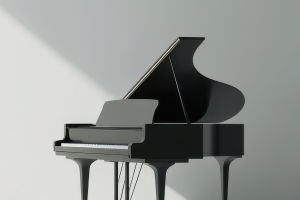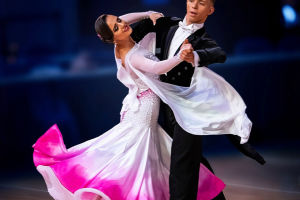Get ready for an artistic journey through time as we explore a remarkable and rare creation: a rotating Cloisonné vase from the Qing period.
This fascinating object, rich in cultural detail and refined craftsmanship, is a perfect example of the elegance and sophistication associated with traditional Chinese decorative arts.
What Is Cloisonné?
Art Form and Technique
Cloisonné, also known as “Jingtailan” (景泰蓝), is an intricate enamel technique developed and refined over centuries in China. Thin metal wires—usually copper—are shaped into delicate patterns and fixed onto a copper base.
The resulting compartments are filled with colored enamel paste and fired in a kiln multiple times to achieve a smooth surface and vibrant hue. After firing, the piece is polished and the metal surfaces are often finished with a layer of gold or similar metal.
Historical Background
According to the classic art manual “Ge Gu Yao Lun,” this form of enamel decoration was introduced into China from regions to the west during the 13th century. It gained prominence during the Ming dynasty, particularly under the reign of Emperor Jing Tai.
During the following Qing dynasty, artisans achieved an even greater level of sophistication in both design and execution. For many years, Cloisonné remained a prized and expensive art form, often seen as a sign of status and prestige.
The Rotating Heart-Shaped Vase
A Rare and Ingenious Design
One of the most unique creations in Cloisonné is the rotating heart-shaped vase, developed during the Qing dynasty. This piece, featured in the upcoming Asian Art auction, was made during the reign of Emperor Qianlong.
It showcases a luxurious and complex structure that makes it not only a decorative item but also a mechanical marvel.
Construction and Features
The vase is composed of three main components:
1. Upper Rim and Neck – Slightly flared with elegant decorations.
2. Main Body – Shaped like a rounded heart, placed within the vase base, and capable of rotation.
3. Base – Trumpet-shaped, serving as a stable support.
The vase includes side decorations resembling elephant ears and a joint design that allows the central vessel to rotate. This layered construction is extremely rare and technically challenging to produce.
Colors and Motifs
Sky Blue and Fragrant Autumn Yellow
The top and base areas are covered with a delicate sky blue enamel, decorated with lotus flowers, tropical fruits, and large leaves. The shoulders are sectioned with golden cloud designs and bat patterns, symbols traditionally associated with good fortune.
The main body of the vase features a rare hue known as “qiū xiāng sè” (秋香色), often translated as “fragrant autumn color.” This shade, a blend of yellow and green resembling light olive, was associated with noble status during the Qing period. It was once exclusive to members of high rank and forbidden to others, as recorded in official records on traditional garments.
A Touch of Elegance and Power
Decorative elements include the mythical Kui dragon (夔龙), representing strength and greatness. This motif appears within swirling cloud-like patterns and reflects the ideals of prosperity and long life. The layout is balanced, and the enamel colors blend harmoniously, making the object not just beautiful but symbolically rich.
Why This Vase Stands Out
Rarity of Design
While Cloisonné items are already treasured for their color and technique, this rotating vase is a true masterpiece. Very few pieces of this type have survived, especially in such excellent condition.
The concept of an inner rotating vessel inside a stationary outer structure was complex to achieve and required both artistic vision and technical precision.
Craftsmanship and Heritage
As noted in the writings of Xu Zhiheng in Yinliu Zhai Shuo Ci, this “rotating heart” vase represents one of the highest levels of ceramic engineering during its time. The balance of innovation, symbolism, and aesthetic beauty places it among the most exceptional creations in traditional Chinese decorative art.
Conclusion
This Cloisonné rotating heart-shaped vase offers more than just visual beauty—it’s a window into centuries of artistic excellence and cultural expression. With its vibrant hues, rare form, and profound symbolism, this object captures the spirit of refined craftsmanship.
For collectors and art lovers alike, it’s a vivid reminder of the legacy of fine design and the incredible ingenuity behind historic Chinese artistry. Stay curious, stay inspired!


